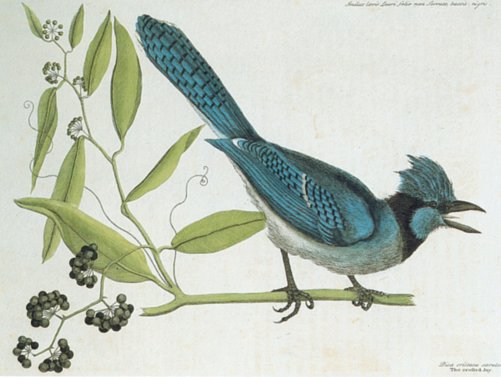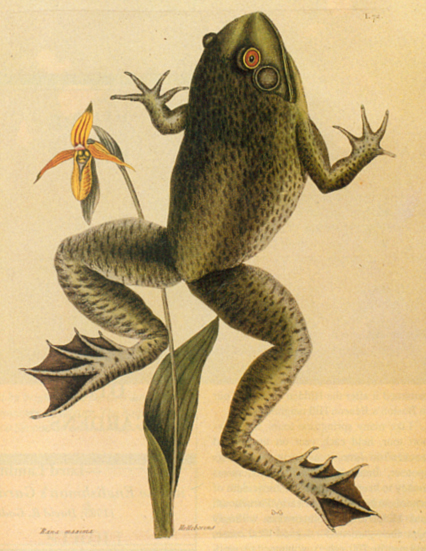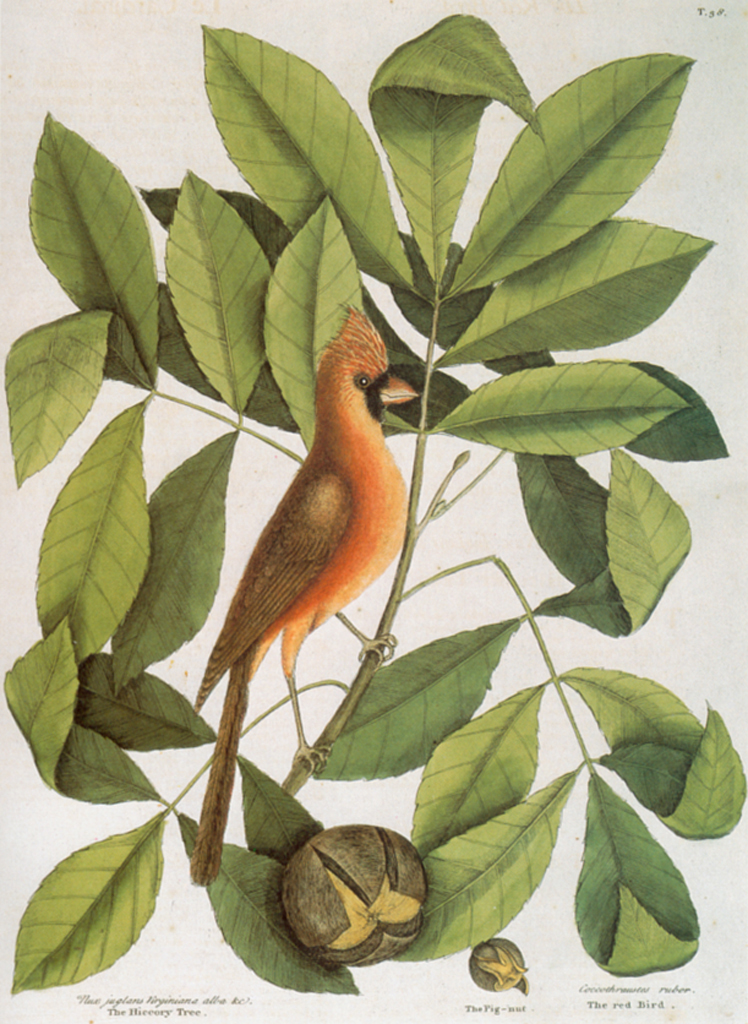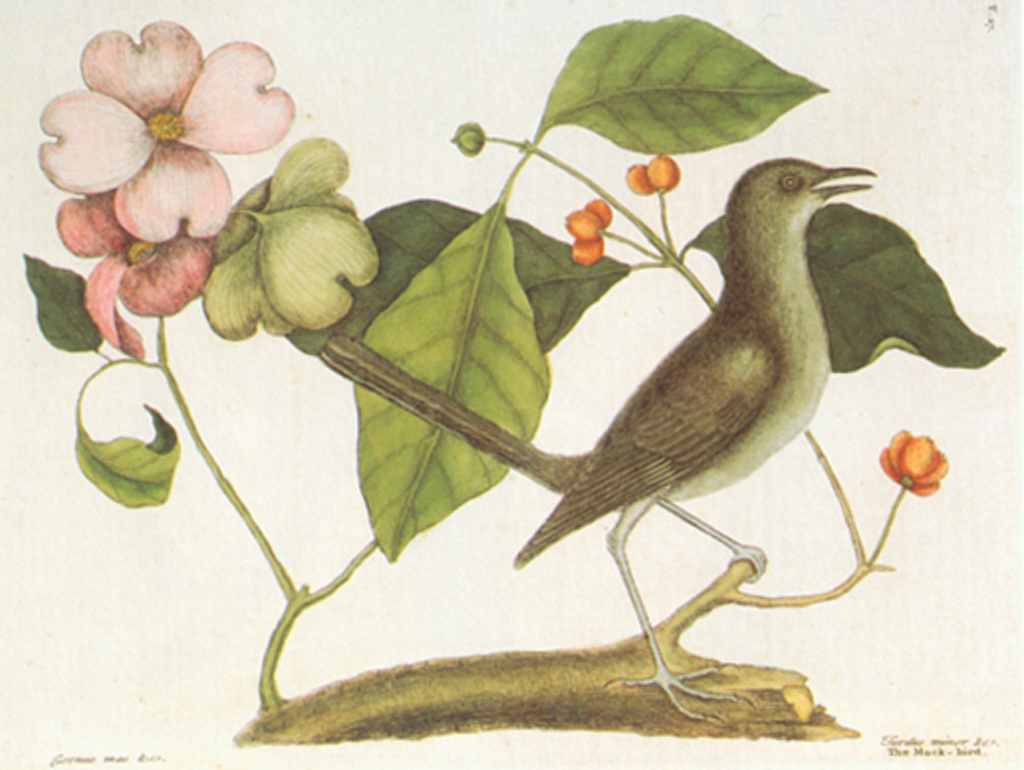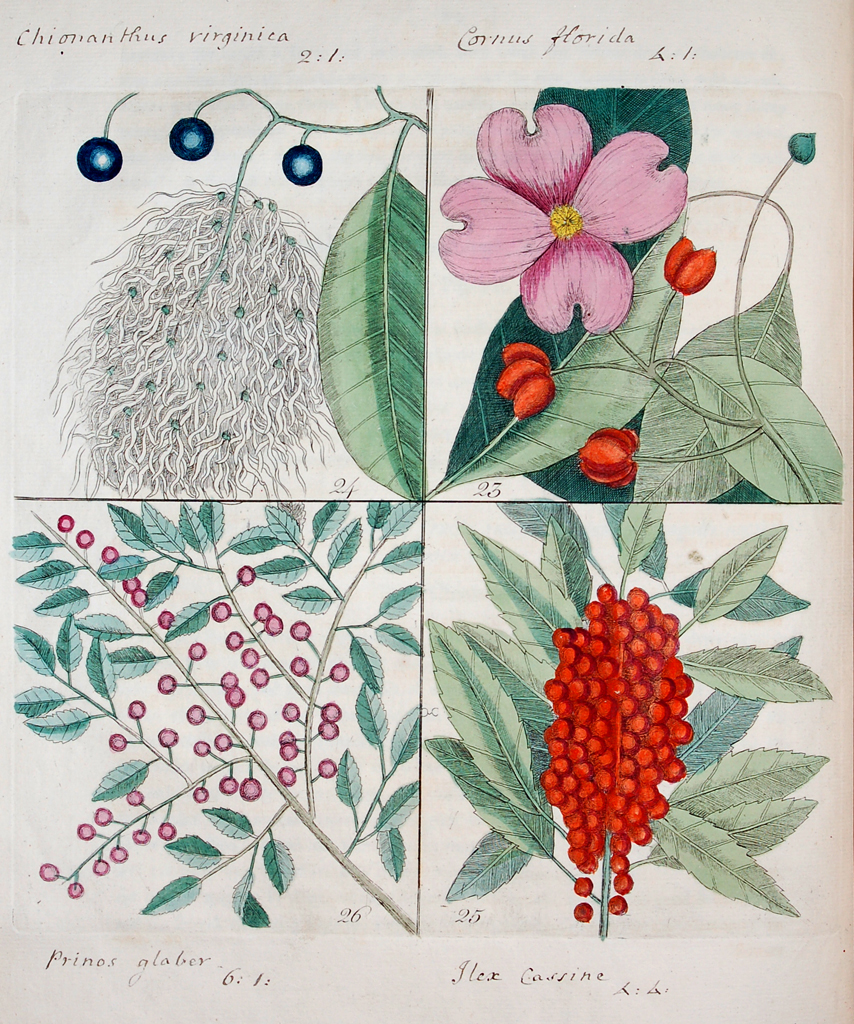The first accounts of the strange flora and fauna of the New World created a great demand among European scientists for more detailed information. In 1712 a young English naturalist named Mark Catesby sailed to Virginia to visit his sister in Williamsburg. For the next seven years, Catesby traveled throughout the colony, observing the natural resources and gathering plant samples and "many birds, shells, snakes and other specimens" to send back home. When he returned to England, he caught the attention of William Sherard, one of the leading botanists of the day. Sherard and a group of "curious friends" sponsored Catesby's second trip to America in 1722 to collect more samples and to make the first extensive drawings of American nature.
When he returned home, Catesby began work on producing prints of his watercolor drawings, resulting in the publication of his life's work, The Natural History of Carolina, Florida, and the Bahama Islands. This monumental two-volume set is considered to be one of the most important achievements of eighteenth-century natural science. Although he was not a trained artist, his drawings and descriptions, especially of birds, were so detailed and vibrant that today he is known as "the founder of American ornithology."
Catesby spent some twenty years on The Natural History project until his death in 1749. He was a pioneer in the field of scientific illustration, and his work was known in America and Europe, but his books were not a commercial success. His reputation has grown in recent years, and today the engravings are highly prized by collectors. The original watercolors are in the Royal Library at Windsor Castle where they have been since George III purchased them in 1768.

